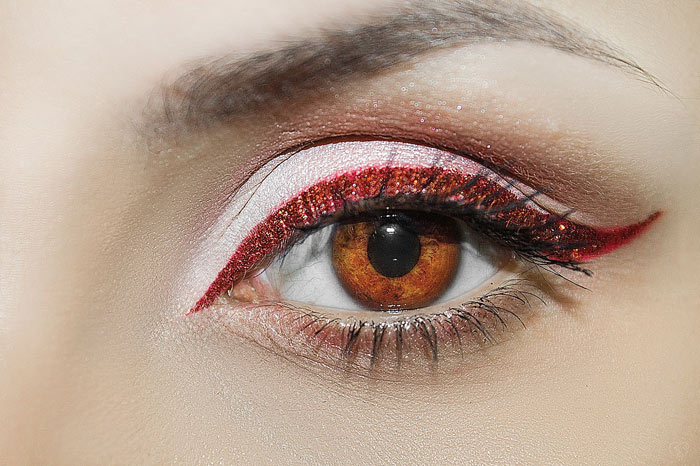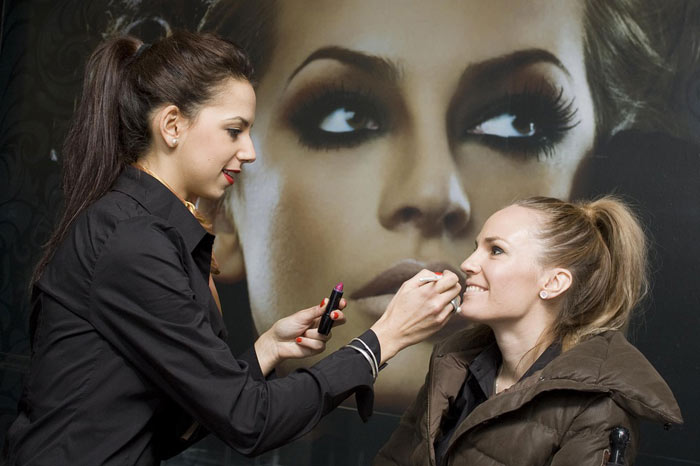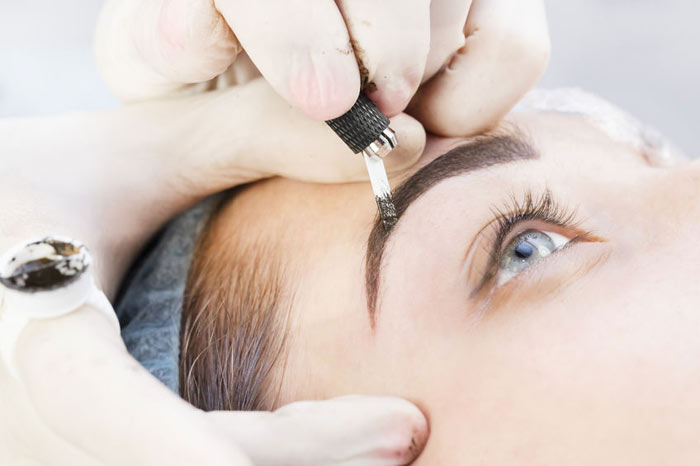The procedure of permanent makeup has evolved and changed in recent years. Previously, tattooing was made in such a way that it was impossible not to notice it on the face – bright eyebrows and underlined lip contour. Today, naturalness is a priority, so many new techniques have emerged. Such techniques as feathering and “smoky eyes” are popular beyond any doubt.
 Permanent makeup allows not only to improve appearance, but also to correct some aesthetic imperfections – to mask postoperative scars, the effects of skin diseases (for example, vitiligo), or to minimize age-related changes. The pros and cons of modern permanent makeup are discussed on Womendialogue.com.
Permanent makeup allows not only to improve appearance, but also to correct some aesthetic imperfections – to mask postoperative scars, the effects of skin diseases (for example, vitiligo), or to minimize age-related changes. The pros and cons of modern permanent makeup are discussed on Womendialogue.com.
4 arguments “for” permanent makeup
The advantages of the procedure of permanent makeup include, above all, economic benefits. How long does the average color makeup stay on the eyebrows? At best, it lasts for 2 weeks, and you just need to go to the beauty salon and make them look great again. Eyebrow tattooing will delight you much longer (up to 5 years), and the specialist will select your color and make the perfect shape.
Permanent makeup periodically needs correction – it depends primarily on the individual characteristics of the body and metabolism. If necessary, it can be done every 2-2.5 years. The lines above the eyes can last up to 10 years, and lip tattooing will last for 2-3 years. During this time you will not need to spend money on makeup and get up in the morning to do makeup – you will always look beautiful. You will not experience discomfort on a beach, in a pool or in the morning after the date.
Another obvious advantage of the procedure of permanent makeup is its painlessness. You will not feel pain even when making a tattoo on such a hypersensitive skin area as the zone around nipples – for example, after augmentation mammoplasty. Of course, you can ask a tattoo specialist to use anesthetic creams if you are in doubt or if you have an increased sensitivity threshold, but in general, this procedure does not require any special anesthesia.

The procedure of permanent makeup does not have a large list of contraindications. This is another argument in favor of this procedure. It is not recommended to be done during pregnancy and the lactation period, in case of blood diseases, when a person is prone to scarring, or in case of uncompensated diabetes. Permanent makeup is assigned with precautions to the clients who have a history of stroke or heart attack. For such patients, the permission of an attending physician is required.
Another plus of the permanent makeup procedure is that such makeup can always be removed. In some cases, it is removed to clean skin. To remove permanent makeup, use a remover or neodymium YAG laser. The last option is a priority if you want to get rid of the unsuccessfully made permanent tattoo because it allows you to remove in a few sessions what you do not like or are tired of. It happens that a woman had had lines above her eyes for 10 years before she realized that this makeup was no longer suitable for her. Instead, she could try something new and more relevant, for example, tattooing eyelids with shading. To do this, of course, she must first undergo the removal procedure and then do a new permanent makeup.
How to choose a master
Perhaps the main drawback of this procedure can be dubbed as the wrong choice of a specialist. It is precisely this that most often leads to the negative effects of permanent makeup – irregular lines, incorrectly shaped eyebrows, etc. Keep in mind the important fact that tattoo masters and permanent makeup specialists from specialized clinics work with different pigments. The latter use softer and more natural materials that are removed more easily in case of failure. At the same time, they require correction from time to time. You make the final choice, of course, but if we talk about the removal, it is very difficult to do it, when the red and green hues are present in the tattoo paint.
Before you make up your mind concerning permanent makeup, you need to carefully look at the masters’ portfolio, learn about the opportunities of a clinic or salon that you want to attend, and consider how experienced the master is.
Today, many experts are active on Instagram, where they post photos of their work. But not only photos must draw your attention. Be sure to read the reviews and, if possible, communicate with the clients of this fabulous specialist. It is best to look for experts, following their clients’ recommendations – thus you can personally see the result of the work and listen to the original reviews.

If you liked the portfolio and did not see negative comments, ask for a consultation. A good specialist will not talk about what a good fellow he is, but will show certificates that he can provide this service and talk to you about your look. The master should offer you a type of makeup, draw a sketch for you and discuss it with you. At each stage of work, he/she must demonstrate “preliminary results” for you to see what is happening with you and be able to tell in time what you like or dislike. It is very important to be in constant contact with the specialist during the procedure and strictly follow all his recommendations after it.
Strictly monitor the sterility. If the procedure is not carried out in sterile conditions, or the instruments used to inject pigment under the skin are not sterile, the consequences can be very deplorable – from inflammation or suppuration to infecting with herpes, hepatitis and even syphilis. And here we again return to the topic of the right choice of specialist and place. If you want to be sure that the procedure will be as safe as possible, you should not save money on permanent makeup and go to a well-known medical center, which is licensed and has all the necessary conditions for the procedure to be carried out. It should not be a tattoo parlor in the basement of a residential house which even cannot provide sterility.
If you decide to remove this makeup, it will take a lot of time. You must be prepared for the fact that the tattoo does not disappear as if by magic, i.e. right away after exposure to the laser. You may need several procedures if your goal is to remove permanent makeup to the very skin. The removal of a makeup tattoo can take from a couple of months to 1-2 years. This can be attributed to the disadvantages of poorly made, boring and outdated makeup. The duration of removal, first of all, will depend on the color of the pigment (red, green, yellow shades are poorly removed, only black is removed well). Another factor is the depth to which it was introduced, the skin and the patient’s health, as well as the number of times you have already done permanent makeup before.
With time and/or under the influence of the endocrine glands and metabolism, permanent makeup can change its color, and the former pitch-black eyebrows will become blue or green. This is because it is simply impossible to predict how this or that pigment will behave in this particular case.

It is also necessary to note a few important considerations before removing a tattoo: first, the choice of a specialist. It is even more dangerous to do it than to make a mistake while choosing a master who will make the tattoo. You can remove tattoos only in a clinic and only with the doctor who has a certificate proving his right to work with laser devices.
Secondly, when removing a tattoo, you must be prepared for the fact that you may face some unpleasant consequences. For example, the removal of permanent makeup can lead to swelling, which, of course, will pass, but you need to be ready for it. If the permanent lip paint originally contained iron oxide (you couldn’t know this), while removing it your lips can turn black. Gradually, this shade will go away, but you will have to walk for a long time with a gray line around the lips. The same iron dioxide is found in the pigment paint for eyebrows. When removed, it can make them almost colorless, and you will definitely need to re-tattoo the eyebrows.
Based on the abovementioned tips, you can make an unequivocal conclusion that the choice of a specialist in permanent makeup should be approached with full responsibility. This should not be a new person to the profession. He/she should be able to work with different techniques, on the high-quality professional equipment and, of course, in a clinic.










